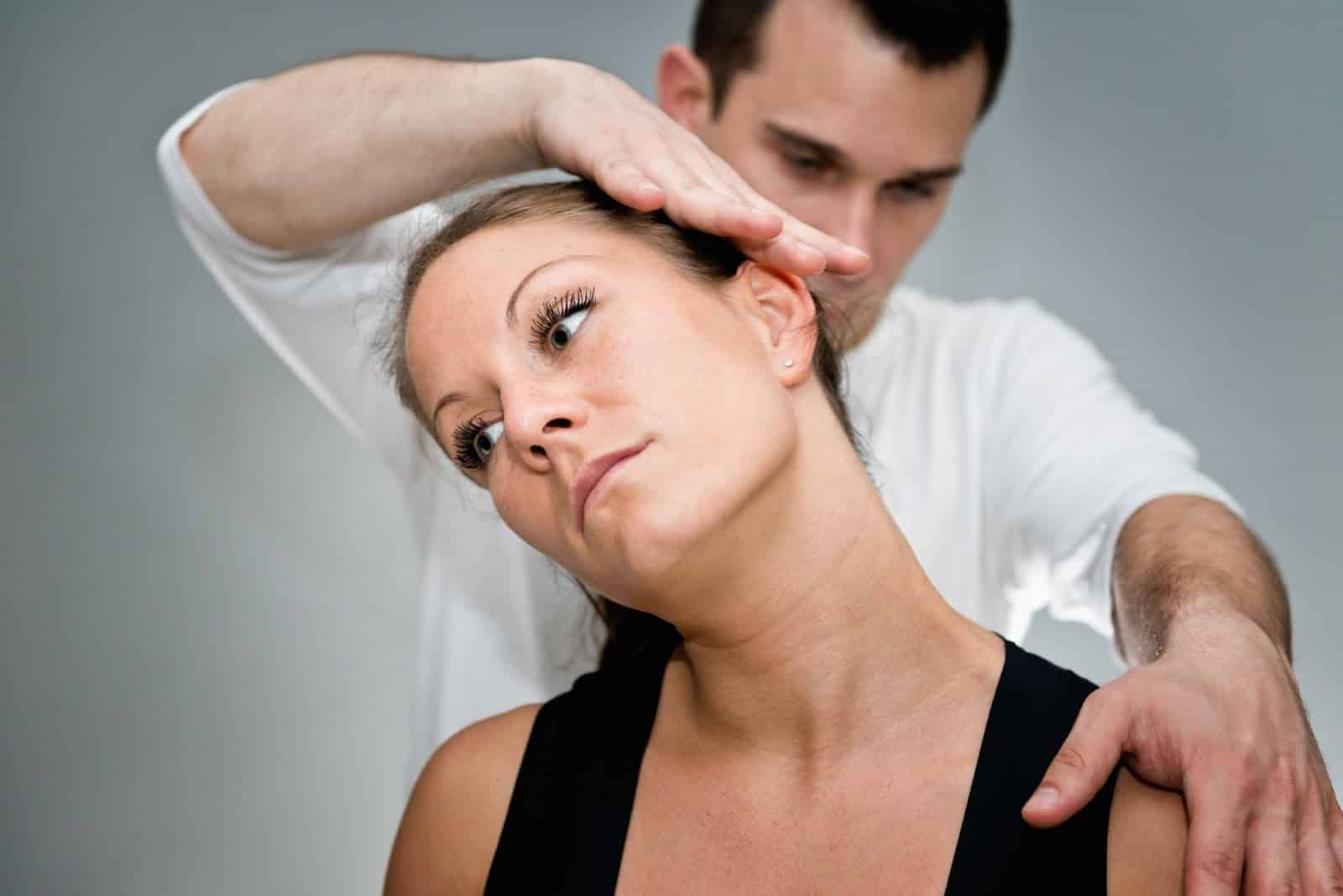Have you been told not to see a chiropractor due to the increased risk of getting a stroke? If so, you’ve probably been fed misinformation that is not backed by science, research or the data. This week’s blog is specifically for those who are worried about seeing a chiropractor due to this repeated phrase that is not based on any literature review or clinical trial.

4/13/2023
By: Alex Earl, DC
Spine Care Specialist
It is a common misconception that chiropractors cause strokes in patients by manipulating or adjusting the neck. This myth has been perpetuated by medical providers and the media who lack a fundamental understanding of chiropractic medicine and the techniques used in cervical spine adjustments.
Let us first define what a skilled and highly trained chiropractic physician is. They are professionals who have undergone extensive education and training in the diagnosis and treatment of neuromuscular disorders. Their expertise falls directly under the medical standards of care for neuromusculoskeletal care by treating physical complaints with physical remedies. Chiropractors use manual therapy techniques, of which manipulation of the spine and other joints to alleviate pain and improve function is the most commonly used. It is important to note that not every patient needs to be adjusted every visit. A chiropractic physician who understands this is practicing evidence-based treatment standards just like the medical profession.
When it comes to adjusting the neck, chiropractors use various techniques depending on the patient’s needs and preferences. The most common technique used is the high-velocity, low-amplitude thrust (HVLA). It involves a quick and precise movement of the neck joint, which produces a cracking sound. Contrary to popular belief, this sound is not the bones cracking but rather the release of gas bubbles in the joint, which is a normal physiological response. (For more on this, please see my most recent blog article entitled, “What Actually Happens When You Get Adjusted by a Chiropractor?”)
A skilled and competent chiropractor will always conduct a thorough physical examination and medical history of the patient before performing any cervical spine adjustment. They will also take into consideration any risk factors that may predispose the patient to stroke, such as smoking, hypertension, or a history of cardiovascular disease. If any red flags are identified, the chiropractor will refer the patient to a medical doctor for further evaluation.
When someone warns about the possibility of a stroke occurring, what they are warning you about is an incident called a cervical artery dissection (CAD). It is important to note that cervical artery dissection is an extremely rare but potentially serious condition that can lead to a stroke. It occurs when there is a tear in the lining of the artery in the neck, which can cause a blood clot to form and block blood flow to the brain. While some medical doctors claim that chiropractic manipulation can cause CAD, there is little to no evidence to support this claim.
In fact, a systematic review published in the Journal of Manipulative and Physiological Therapeutics in 2010 found that the risk of CAD associated with chiropractic manipulation is extremely low, with estimates ranging from 1 in 10 million to 1 in 2 million neck adjustments. This risk is comparable to the risk of stroke associated with common everyday activities such as turning your head to check your blind spot while driving.
Furthermore, a study published in the journal Stroke in 2015 found that there is no increased risk of stroke associated with chiropractic manipulation compared to primary care physician visits. The authors concluded that the association between chiropractic manipulation and stroke is likely due to patients seeking care for symptoms related to CAD rather than the manipulation itself causing the stroke.
The notion that chiropractic manipulation causes stroke is a myth perpetuated by medical doctors who lack a fundamental understanding.
These systematic reviews provide strong evidence that the risk of stroke associated with chiropractic neck manipulation is extremely low. It’s important to note, however, that like any medical intervention, there are always risks associated with chiropractic care. Chiropractors should always prioritize patient safety and use caution when performing neck adjustments, particularly in patients with certain medical conditions or risk factors for stroke.
As a chiropractic physician, I understand the concerns that medical professional and the media may have regarding the safety of neck adjustments. However, I must emphasize that it is a myth that chiropractic adjustments cause strokes. In fact, the evidence suggests that chiropractic adjustments are safe and effective for the treatment of neck pain and other musculoskeletal conditions.
It’s important to understand that neck adjustments are not a one-size-fits-all approach. Every patient’s needs and conditions are unique, so a chiropractor will always start by taking a comprehensive medical history and performing a thorough physical examination. This will help to identify any contraindications or other factors that may indicate a need for caution or referral to another medical professional.
Once the chiropractor has determined that a neck adjustment is appropriate, they will use a combination of manual techniques to mobilize and adjust the joints in the neck. This may include applying gentle pressure, using a quick thrust, or using a specialized instrument to deliver a precise and controlled force. The goal is to restore proper joint mobility, reduce pain, and improve overall function.
Now, let’s address the concern that chiropractic adjustments cause strokes. The truth is, this claim is not supported by the evidence. While there have been rare cases of strokes occurring after chiropractic adjustments, there is no evidence to suggest that the adjustment was the cause of the stroke. In fact, a large-scale study published in the journal Spine found that there was no increased risk of stroke associated with chiropractic neck manipulation.
It’s important to note that the risk of stroke is extremely low, regardless of whether a person receives chiropractic care or not. In fact, research suggests that the risk of stroke associated with neck manipulation is no greater than the risk associated with everyday activities such as turning your head to look over your shoulder while driving.
That being said, it’s important for chiropractors to always prioritize patient safety and to use caution when performing neck adjustments. This means being aware of contraindications, using appropriate techniques, and referring patients to other medical professionals when necessary. By doing so, chiropractors can help to ensure that their patients receive safe and effective care.
Real Life Case Study: “I was told NEVER go to the chiropractor.”
Recently, a patient came to our Fort Oglethorpe office for neck and shoulder treatment. After our new patient evaluation, he called to cancel his future appointments. Puzzled, our staff inquired about the reasons for canceling. He said, “A close family friend said to never go to the chiropractor. They could cause a stroke.” Which worried me and my family about coming in for neck and shoulder treatment.
After identifying the problem he was experiencing, I was worried he was going to get the proper care and treatment he deserved. So, I gave the family a call and listened to all of their concerns. After accepting my invite to sit in on a session, where I could demonstrate the safety of chiropractic care, the family’s concerns were sufficiently addressed and treatment commended once more.
Have you been told to “not go to the chiropractor”? If so, we get it. Some people are genuinely nervous about getting their spine “cracked” or adjusted. We would gladly walk you through the exam step-by-step process, and, if you don’t feel comfortable, we wouldn’t adjust you. We have several other proven methods for helping our patients overcome pain, discomfort and stiffness.
Do this next!
Maybe you (or someone you know) is in a similar situation to our patient who was told “never to go to the chiropractor”? If so, I have great news for you today… You are in the right place for relief. Every day, Chattanooga and North Georgia residents are getting the same relief as our recent patient. If you’d like to learn more about your options for overcoming spine pain, do the following:
- Share this Article with a Friend or Family member who currently has low back pain and needs relief.
- Call our office TODAY at (866) 668-0108 to book your next appointment!
- Keep an eye out for next month’s article, which will be about our #1 Spine Strategy that our patients have called, “The Best Stretch” they’ve ever had for that one tricky spot of their spine. If you have spine stiffness, you know the spot I am referring to!
References:
Cassidy JD, Boyle E, Côté P, et al. Risk of vertebrobasilar stroke and chiropractic care: results of a population-based case-control and case-crossover study. Spine. 2008;33(4 Suppl):S176-S183.
Paskowski I, Chung C, Côté P, et al. Chiropractic manipulation and stroke: a systematic review of epidemiologic research. J Manipulative Physiol Ther. 2012;35(7):536-547.

